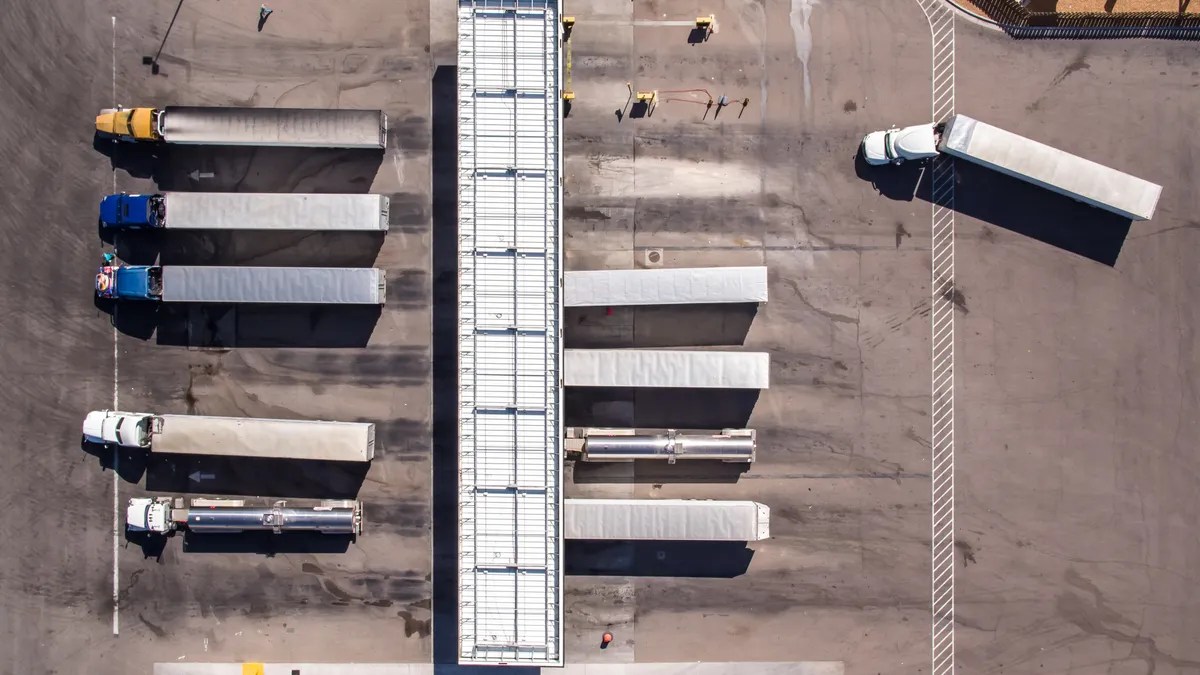Thanksgiving in any year can be a challenge to manage. But in 2020, reefer fleets must prepare for the usual volume and variability — as well as the unique, unknown challenges that may lie ahead in the face of pandemic-driven shifts.
According to Dean Croke, principal analyst with DAT, 2019 data from the Department of Agriculture reveals that five states produce 64% of the turkeys by weight, equivalent to more than 97,000 truckloads.
"Most production plants are within 100 miles of farms," Croke said. "With most farms being close to feed sources like soybeans and corn, there is a heavy concentration of turkey farms and processing plants in the Midwest to ensure live-turkey transportation times are kept to a minimum."
The result is that the outbound side of turkey transport — which includes distances from farms, processing plants, cold stores and distribution centers — involves a much longer haul, he said.
In the U.S., people consume roughly 46 million turkeys over the holiday, according to R+L Global Logistics' Truckload Shipping. Of the total volume, about 90% are frozen. The fresh turkeys only have a 21-day shelf life, adding a layer of complication.
But the group of trucks that haul turkeys typically remains the same, so they know what operations normally entail.
"We've got a small, fragmented community that is somewhat transient," said Mark Petersen, vice president of North American surface transportation for C.H. Robinson. "They will be looking for the opportunities that the holiday brings."
A potentially challenging main course
While there are norms that go along with turkey delivery each Thanksgiving, this year throws a wrench into some of the standard approaches.
"One thing that makes this year unique is the likelihood that people will have smaller gatherings, which might decrease the demand for big turkeys and therefore decrease velocity," said Petersen. "We also expect there to be less travel, so the location for demand may look different this year."
Families who sometimes ate in restaurants or depended on restaurants to supply their Thanksgiving tables but may not this year are likely to cause some shifting in volume, as well. It's virtually anyone's guess how and where demand will shake out, and hard numbers likely won't exist until after the fact.
Another potential trouble spot: production delays.
"Any slowdown makes it tough for carriers to make money."

Dean Croke
Principal Analyst for DAT
"We have seen a good deal of COVID in the processing plants over the months of the pandemic, so any delays there may slow things at [distribution centers] and on the docks," said Croke. "Any slowdown makes it tough for carriers to make money."
Turkey farmers have been struggling to make processing plans, because demand is unpredictable, according to The Washington Post. Many are concerned they will be stuck with an overstock of large turkeys and won't have enough smaller-sized turkeys.
Croke and Peterson expect demand will be high but neither foresee a shortage in reefer capacity. "It will be tight," said Croke, "and it can be very hard to find drivers to move fresh turkeys if arrangements aren't already in motion. This year even more so, but there's always a truck there for a price."
Croke said that spot rates will begin creeping higher as Thanksgiving approaches. Right now, he said, the outbound rate coming from the chief turkey producing states is at about $3.14 per mile, or 76 cents higher per mile than the national average, representing the inbound/outbound imbalance and increased deadhead miles that carriers must withstand.
Don't forget the side dishes
Thanksgiving dinner involves more than turkey, of course, and all those side dish favorites are beginning to sell at a rapid pace. "Because of all the shortages early in the pandemic, people are securing items like stuffing and cranberry sauce," Croke said.
At the very least, gathering data on where the demand is for these items might help when turkey demand reaches its highest point.
"This year we've all become accustomed to disruptions and operating in a reactive nature."

Mark Petersen
Vice President of North American Surface Transportation for C.H. Robinson
To deliver in this uncertain market, speed and access to visibility will be key, Petersen said. "Technology will help," he said. "This year we've all become accustomed to disruptions and operating in a reactive nature. We will depend on visibility to learn where demand is coming from and then support that accordingly."
While the holiday is getting close, turkey volumes have yet to pick up significantly, said Croke. "We haven't hit peak yet," he said. "But demand will only escalate going forward."








